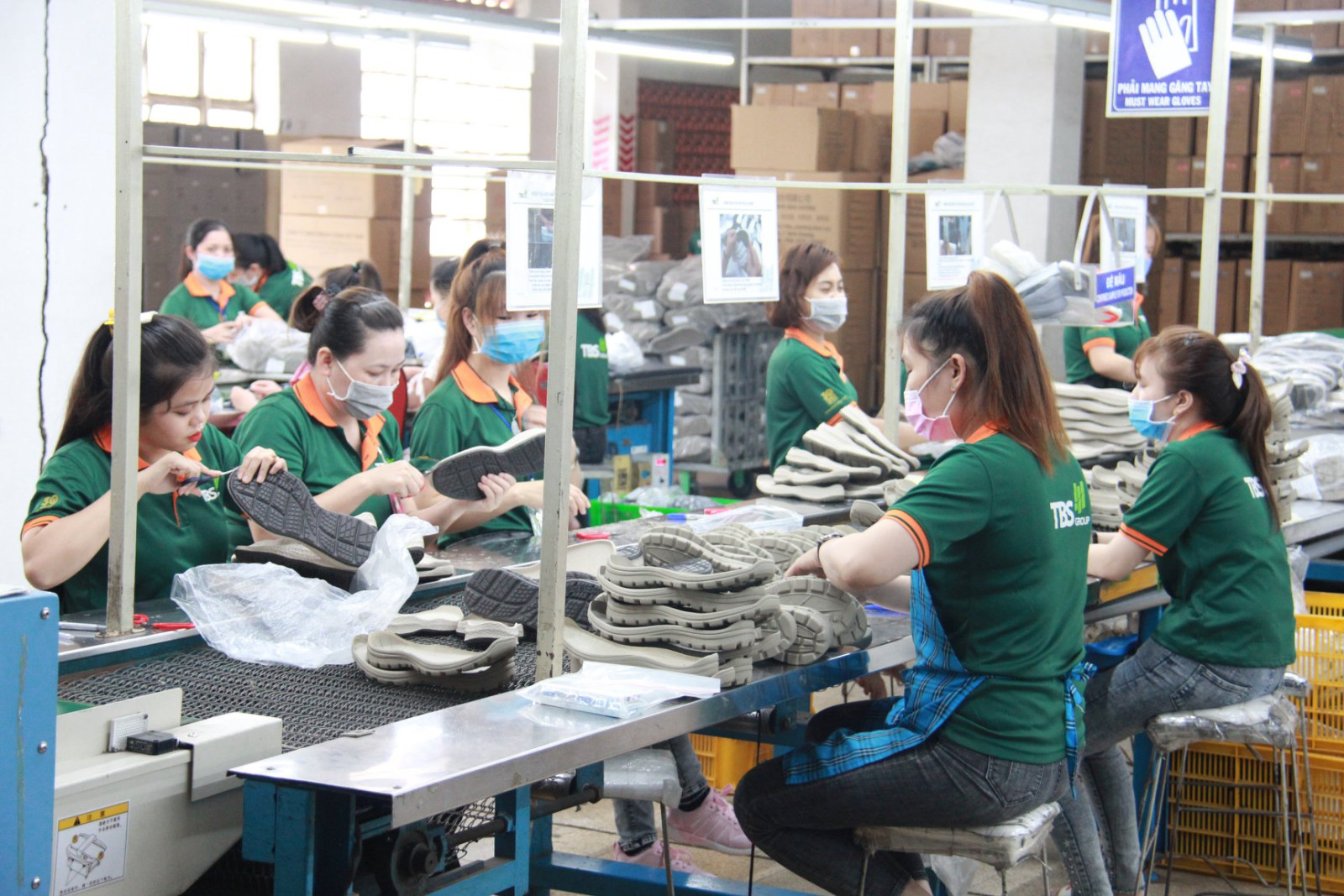Developing auxiliary industries at key export sectors
The leather and footwear industry in Binh Duong has attracted over 200 enterprises, with a total annual production of 110-120 million products, accounting for 8%-10% of the province's total export value. However, many materials for this sector still rely on imports, affecting the ability of companies to proactively develop products and expand markets. With right investment and increase in localized material sources, Binh Duong's leather and footwear industry could establish a strong position in the international market.
Opportunities and challenges
The sector of leather and footwear is one of Binh Duong’s three key export sectors. Currently, companies in this sector have secured enough orders for the entire year of 2024. In the first nine months of 2024, the province’s leather and footwear exports reached US$1.4 billion, a 15% increase compared to the same period in 2023. The European Union (EU) is the largest export market for the province's leather and footwear businesses, accounting for 33.1% of export value, followed by the United States (28.5%), Japan (7.5%) and China (5.7%). Notably, orders, including footwear, have been shifting from other Asian countries to Vietnam in the last months of the year, creating more opportunities for the industry in the near future.

Producing metal and plastic products used in the footwear and garment industry at Thanh Khon Co.Ltd. in Song Than 3 Industrial Park
According to provincial Leather and Footwear Association, about 170 enterprises in the province are currently involved in the production and supply chain for materials supporting the leather and footwear industry. Previously, most materials for footwear production had to be imported, but now the localization rate has reached 55%-60%. Espencially, domestically sourced materials for fabric shoes and exported sports shoes have reached nearly 100% and 80%, respectively.
However, the localization rate of raw materials in the footwear industry is currently considered to be disproportionate to the potential and growth rate of the sector. Furthermore, in the context of many countries around the world imposing increasingly high and strict import standards, it requires businesses, industries’ associations and relevant authorities to effectively coordinate in addressing related issues. In the short term, this means increasing the localization rate of raw materials for industries in general and the footwear industry in particular.
New driving forces
Statistics from relevant authorities show that the entire country currently has only about 20 domestic enterprises capable of supplying high-end raw materials. The footwear industry still has to import large quantities of important raw materials such as leather, technical fabrics, mold accessories, soles, plastics, adhesive and chemicals. China remains the largest supplier of raw materials for Vietnam’s footwear industry, accounting for about 35% of total. If there are fluctuations in this market, it will clearly have a significant impact on the operations of domestic footwear enterprises. Additionally, the implementation of free trade agreements (FTAs) that Vietnam has signed, with clear regulations on intra-bloc origin rates, also presents a major challenge for domestic enterprises.

Binh Duong is making efforts to rapidly increase the localization rate of materials for its key export industries, including the leather and footwear sector. In picture: Shoe sole production at Thai Binh Shoe Investment and Production Joint Stock Company
Regarding the export markets for leather and footwear products, in addition to the rules of origin from FTAs, the EU and the U.S. have introduced new regulations on import standards such as the EU’s Carbon Border Adjustment Mechanism (CBAM). This demands continuous innovation from the leather and footwear sector to meet the stringent requirements of these high-demand markets. CBAM is set to be fully applied by 2030.
Over the past time, Binh Duong has implemented various measures to develop its auxiliary industries and material ones, aiming at gradually increasing localization rates in the province’s key export sectors. Notably, Binh Duong is promoting the development of a mechanical and auxiliary industrial park, led by Truong Hai Group (THACO). This industrial park will help reduce transportation costs, address material shortages and facilitate greater involvement of domestic companies in the global supply chain.
To further support the development of the province’s auxiliary industries, provincial Department of Industry and Trade has advised provincial People’s Committee on issuing the Decision No. 4108/QĐ-UBND dated December 31, 2019, approving a “Development Plan for provincial Auxiliary Industrial Compounds to 2020, with orientations to 2030”. Accordingly, Binh Duong will invest in developing four auxiliary industrial compounds, with 75 hectares each, including one specializing in mechanical industries. Additionally, the province has also planned an industrial park for the mechanical sector to boost the development of the local auxiliary industries.
Reported by Tuan Anh-Translated by Kim Tin

